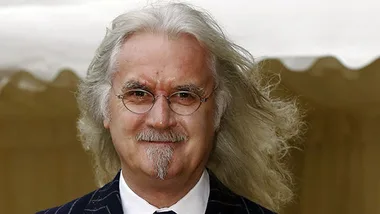It’s not a disease that we associate with younger men – but that is something actor Ben Stiller wants to change. He has gone public with his recent fight against “mid-range” aggressive prostate cancer in a bid to get more men having checks before the standard 50.
In an essay for Medium called “The prostate cancer test that saved my life”, the Zoolander actor talks about his diagnosis two years ago and his follow-up treatment.
It all began with a Prostate Specific Antigen (PSA) test as part of his regular bloodwork when he was 46. Ben did not have a family history of prostate cancer nor was he part of an “at-risk” group. But his score was high-ish and then continued to rise over the next 18 months.
“Taking the PSA test saved my life. Literally,” he wrote for Medium.
As his numbers continued to rise, he went to the next stages of testing. He was sent to the urologist, who gave him “a slightly invasive physical check in his office using a gloved finger. This took all of 10 seconds”. And then it was an MRI and finally a biopsy.
“Then the biopsy came back positive. Of course ‘positive’ for medical tests is usually not so positive,” he wrote. “I had a Gleason score of 7 (3+4), which is categorized ‘mid-range aggressive cancer’.
“Surgery was recommended. At this point I decided to go out and get a few different opinions. All the doctors I talked to concurred that the tumor (sic) needed to be taken out.”
Ben, who has been married to actress Christine Taylor for 16 years with whom he has two kids, Ella Olivia, 14, and Quinlan Dempsey, 11, had a robotic assisted laparoscopic radical prostatectomy two years ago.
“I got diagnosed with prostate cancer Friday, June 13th, 2014. On September 17th of that year I got a test back telling me I was cancer free. The three months in between were a crazy roller coaster ride …”

Ben Stiller with his wife of 16 years, Christine Taylor. PHOTO: Getty
His reason for going so public with such a private matter is to dispel the controversy that surrounds the PSA test when used as a screening tool.
“Without this PSA test itself, or any screening procedure at all, how are doctors going to detect asymptomatic cases like mine, before the cancer has spread and metastasized throughout one’s body rendering it incurable?
“If (I) had waited, as the American Cancer Society recommends, until I was 50, I would not have known I had a growing tumor until two years after I got treated.
“If (I) had followed the US Preventive Services Task Force guidelines, I would have never gotten tested at all, and not have known I had cancer until it was way too late to treat successfully.”
Australian prostate cancer facts
It is the most commonly diagnosed cancer in men.
More than 3000 men die of it in Australia every year.
More men die of prostate cancer than women die of breast cancer.
It is the second largest cause of cancer death in Australia.
There is a family history link. Men with a first degree male relative with prostate cancer have a higher chance of developing it than men who don’t. The risk increases again if more than one male relative has prostate cancer. Risks are also higher for men whose male relatives were diagnosed when young.
The PSA test in Australia is also widely debated with even the Cancer Council saying this: “While some studies suggest PSA reduces mortality on a population basis, the test picks up large numbers of cancers that would have caused no symptoms or harm in the patient. This is known as overdiagnosis. Overdiagnosis of prostate cancer can lead to unnecessary treatments that have side effects such as sexual impotence, urinary incontinence and bowel problems.”
Men concerned about prostate cancer should speak with their doctor.



